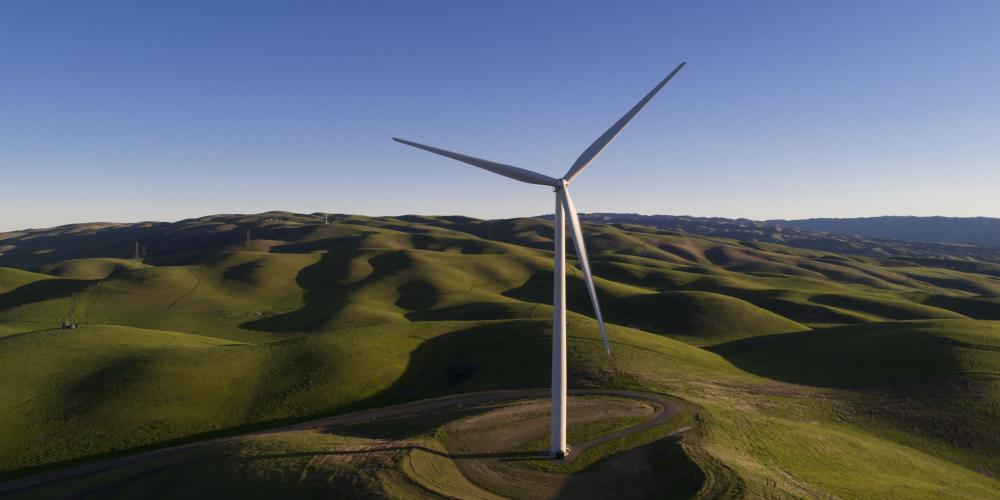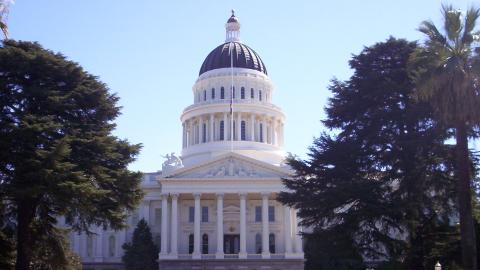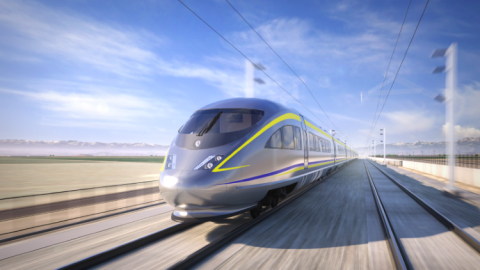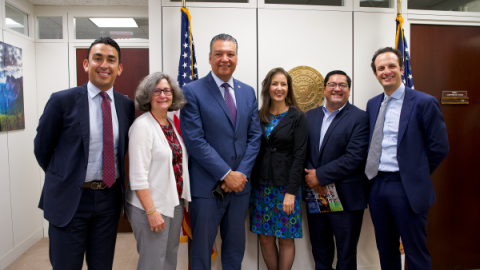
Last week a report was released detailing the dramatic progress made by California Climate Investments – the statewide initiative that puts billions of Cap-and-Trade dollars to work – in supporting projects that are reducing greenhouse gas emissions, strengthening local economies, and improving public health and the environment across the state.
The California Climate Investment Annual Report to the Legislature for 2018, a joint effort produced by the California Air Resources Board and California Department of Finance, contains lots of good news for the state, and the Bay Area specifically:
More than $720 million in new funding last year went to projects that were either under way or completed across all of California’s 58 counties, a two-thirds increase in implemented investments. From rebates for electric cars to affordable housing units, completed projects totaled 75,000, including doubling the number of home energy efficiency installations and nearly tripling the number of trees planted….
Signed by Governor Edmund G. Brown Jr. in July, Assembly Bill 398 extended and improved the state’s world-leading Cap-and-Trade program to ensure California continues to meet its ambitious climate change goals and that billions of dollars in auction proceeds keep flowing to communities across the state through California Climate Investments….
Since 2014, $6.1 billion has been appropriated to 17 state agencies that have distributed $2 billion to projects that are completed or under way. By September 2017, over 80 percent of the funds appropriated were spent on projects benefiting communities throughout the state. Additionally, implemented funds (not including the High-Speed Rail Project) have attracted over $8.2 billion from other sources representing an average of nearly $6 leveraged for every dollar invested.
The below infographic explains how the Cap-and-Trade auction system works and how the proceeds have benefited the state:
So how’d the Bay Area do in terms of project support? Pretty, pretty good. There were over 100 projects that benefited the Bay Area's nine counties, covering a large variety of programmatic areas. Among others, these programs included:
- Advanced Freight Technology Demonstration projects
- Affordable Housing and Sustainable Communities
- Clean Vehicles Rebates
- Forest Health Programs
- Hybrid and Zero-Emission Trucks and Buses
- Energy Efficiency, Renewable Energy and Water Efficiency projects
- Low Carbon Transit Operations
- Rural School Bus Pilot Project
- Sustainable Agricultural Lands Conservation
Some of the bigger ticket Bay Area projects here included the expansion and modernization of SF Muni’s light rail fleet with zero-emissions vehicles, the deployment of near-zero emission drayage truck technologies at the Port of Oakland, new fuel cell buses and H2 station upgrades for AC Transit, the electrification of the Caltrain corridor between San Jose and San Francisco, new rail cars for SMART, and funding to support over 500 units of affordable and/or multifamily housing across the region.
As can be seen in the below table, Greenhouse Gas Reduction Funds (GGRF), projects and vouchers, and emissions reductions are spread throughout the Bay Area’s nine counties.
Please note: Funds as well as projects/vouchers may overlap between counties. Figures should therefore not be summed for a Bay Area total. Priority populations consist of disadvantaged communities as well as low-income communities and households.
| Bay Area County | Total GGRF Funds Implemented: | Total Number of Projects / Vouchers: | Total GHG Reductions (MTCO2e): | Total Projects that Benefit Priority Populations: | Total Funds of Projects that Benefit Priority Populations: |
| Alameda | $115,204,448 | 13,971 | 1,947,317 | 5,154 | $89,869,571 |
| Contra Costa | $34,263,733 | 6,788 | 1,246,843 | 2,281 | $17,371,090 |
| Marin | $18,706,911 | 2,206 | 190,587 | 97 | $1,355,376 |
| Napa | $5,201,372 | 384 | 102,688 | 16 | $790,738 |
| San Francisco | $166,045,142 | 3,817 | 1,166,787 | 1,492 | $147,111,803 |
| San Mateo | $26,563,645 | 5,788 | 216,443 | 1,112 | $12,618,220 |
| Santa Clara | $92,793,674 | 29,940 | 1,633,046 | 11,362 | $46,345,073 |
| Solano | $3,535,214 | 871 | 37,322 | 498 | $2,049,865 |
| Sonoma | $21,226,907 | 4,388 | 178,005 | 107 | $249,595 |
Source: California Climate Investments Project Map
As the region's transportation planning, financing and coordinating agency, MTC has been intimately involved in supporting many of the aforementioned "big ticket" projects over the years – see here for more details on MTC's role in Muni's light-rail vehicle expansion in San Francisco, for example. In addition, MTC works closely with the state in setting priorities for the region and programming funds received by the Cap and Trade program.
At the MTC Commission meeting this Wednesday, March 28, for instance, the Commission will discuss recommended priorities for Round 3 of the Affordable Housing and Sustainable Communities program, which is a statewide competitive program funded by State Cap and Trade proceeds, as well as a program of projects for the FY 2017-2018 Low Carbon Transit Operating Program, which receives 5 percent of the overall state's Cap and Trade auction revenues.
For anyone interested in a deeper dive, California Climate Investments has made quite a bit of information available.
Key Documents and Links
- Press Release
- 2018 Annual Report
- 2018 Project Profiles
- List of California Climate Investments
- California Greenhouse Gas Reduction Fund Project Map - Updated with 2018 Annual Report Data (see excerpt below)
Source: California Climate Investments Project Map
For those interested primarily in Bay Area projects, source data is provided here.



Submit your comment
In order to receive a reply to your comment, please provide an email address.